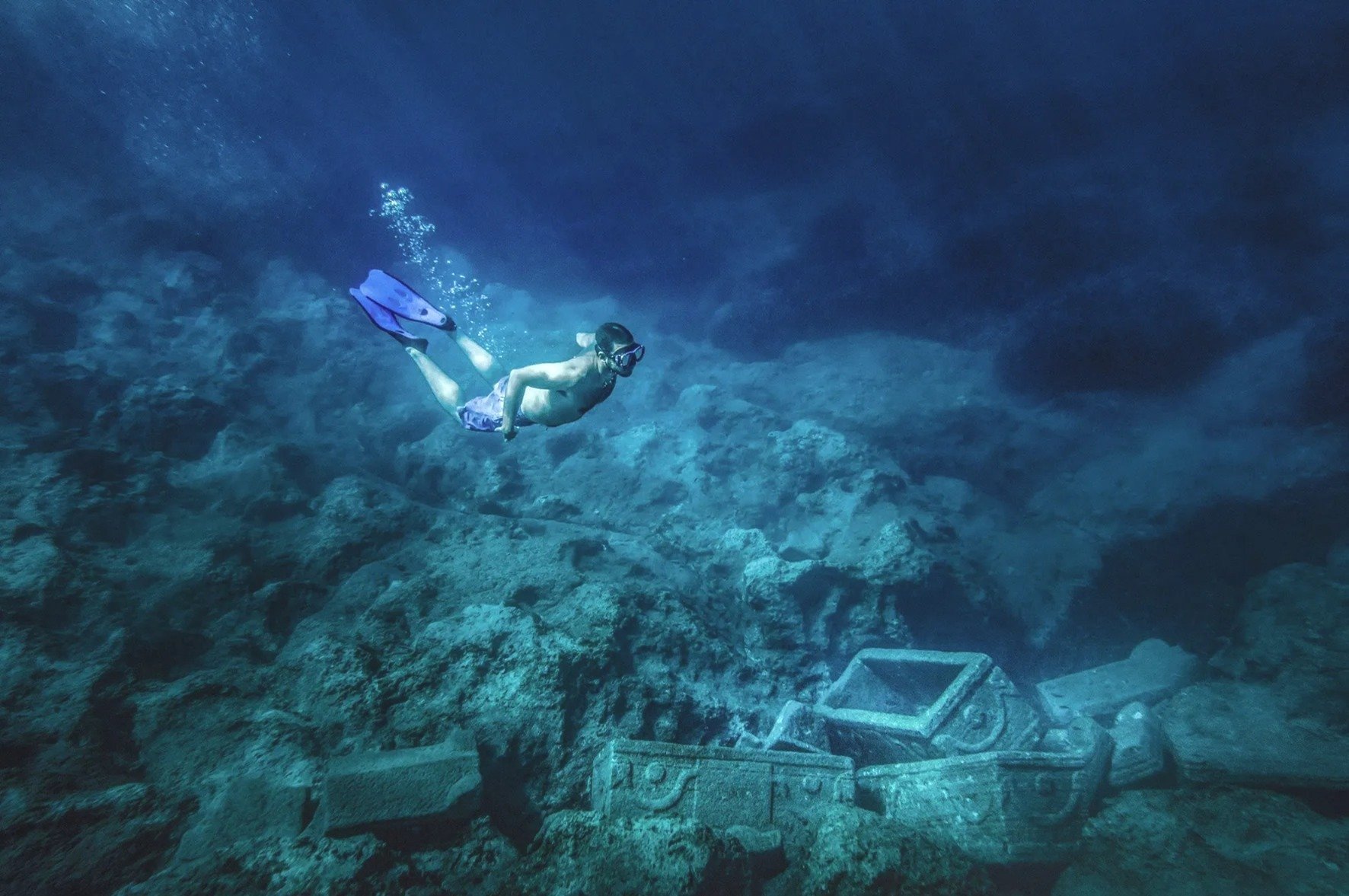The underwater archaeological sites that can be visited are the late Roman shipwreck at Telegrafo Nion Sourpis, the Byzantine shipwrecks at Glaros Nion and Kikynthos Amaliapolis.
The late Roman shipwreck at Akrotiri Glaros
The western part of the Cape of Glaros is scattered with anchors mainly from the Middle Byzantine period. A closer study of the concentrations and the condition of some, combined with the concentration of pottery, probably date to the wreck of a large merchant ship of the 12th-13th c. A.D. Its cargo consisted of amphorae carrying wine. The multitude and dispersion of pottery gives the impression of a large cargo and therefore a ship.
Depending on the route, the diving visitor can observe the evolution of anchor types from different eras, the history of the last moments of a shipwreck through its anchors, as well as the combination of the marine environment and the remains of the shipwreck.
Glaros, Western Pagasitic, Byzantine amphora body,
©YPPOA-EEA, photo Matteo Collina Univerità della Calabria –DIMEG
The Byzantine shipwreck in Kikynthos Amaliapolis
Between the 11th and 12th centuries at the entrance of the Pagasitic Gulf, a Byzantine merchant ship was wrecked near the islet of Kikynthos, located to the east of the bay of Amaliapoli. The bulk of the wreck consists of pithos and amphorae. Its location was identified by the Institute of Marine Archaeological Research in 2005.
Today, the diving visitor can observe the remaining fragments of pithos and some amphorae, which constitute the main concentration of the wreck.
Kikynthos, Western Pagasitic, pitho fragments,
©YPPOA-EEA, photo Matteo Collina Univerità della Calabria –DIMEG
The Byzantine shipwreck at Akrotiri Telegrafos
At the bottom of the northeastern shore of Cape Telegrafos are the remains of a ship's cargo from the late Roman period. Its cargo consisted exclusively of trade amphorae. The excavation and study of the amphorae showed that they were carrying wine, garum (a fermented fish sauce which was used as a condiment), fruit and olives, with the main origin of mainland Greece and the Eastern Aegean.
View of Telegrafo’s shipwreck
©YPPOA-EEA, photo Stefanos Kontos
The ship's destination would be one of the ports of the Pagasitic Gulf, to exchange its cargo for grain. Most likely, a rough sea overturned the ship and its cargo was lost at the bottom until it was "recovered" by the research of the Institute of Marine Archaeological Research. The visiting diver can observe the site and the traces of the underwater excavation, where part of the scattered cargo is preserved.
Wreck cargo collection area 9 in Kikynthos. Sections of pithos and amphorae can be distinguished
©YPPOA-EEA, photo Stefanos Kontos
At the Public Information and Awareness Center for the three Visitable Underwater Archaeological Sites, the visitor can have the experience of virtual diving with 3D augmented reality glasses. Thanks to the virtual tour the underwater world of the three wrecks becomes universally accessible, even to those who cannot do natural diving.
View of Telegrafo’s shipwreck
©YPPOA-EEA, photo Stefanos Kontos
The three new underwater archaeological sites, together with the underwater archaeological site of Alonissos, make up a unique underwater archaeological park with a unique diving experience at an international level.



























































































































